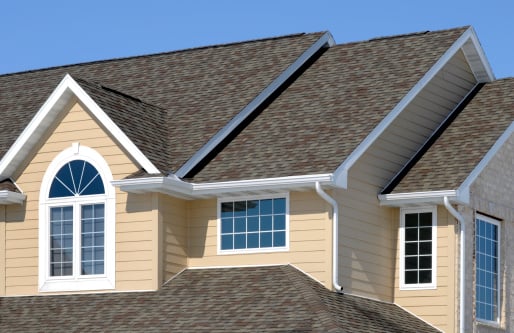When it comes to your roof, age matters at claim time

Wind and hail storms have been increasing in frequency over the past several years. As a result, some insurance companies have begun offering to cover roofs for Actual Cash Value (ACV) rather than Replacement Cost Value (RCV). What might seem as an attractive, lower premium offering at first sometimes catches homeowners off guard and without sufficient financial resources to pay for roof repairs after a loss occurs. If you live in an area where roof damage from windstorms and hail is prevalent or possible, the decision you make about this coverage could mean the difference between paying out just your homeowners policy deductible or your deductible plus depreciation costs. This difference could amount to thousands of dollars depending on the age of your roof. As with any other covered property in your homeowners policy, your roof is subject to either ACV or RCV when you suffer a covered cause of loss. If your policy is for ACV, your insurance company will pay the actual cash value of your roof at the time of a covered loss. This means the actual cash value minus your deductible amount minus the depreciation cost according to the age of your roof. Generally, the older your roof, the higher the amount depreciated…or not covered under your policy. If your policy is for RCV, your insurance company will pay the replacement cost value of your roof at the time of a covered loss. This means the replacement cost value minus your deductible. There is no deduction for depreciation under the RCV valuation method. Here’s an example to help explain the difference. In this example, we’ll assume that Smith and Doe are neighbors, living in exactly the same type of house, constructed in the same year, with the same roof, and both have had the same type of wind damage to their roofs. The only difference is that Smith has ACV coverage and Doe has RCV coverage. Cost of Smith’s roof ten years ago: $15,000 Cost of Doe’s roof ten years ago: $15,000 Insurance valuation method: ACV Insurance valuation method: RCV Policy deductible: $1,000 Policy deductible: $1,000 Cost of repairs to roof: $15,000 Cost of repairs to roof: $15,000 Depreciation schedule: $1,000/year Depreciation not applicable for RCV Insurance payment: Insurance payment: $15,000 repair cost $15,000 repair cost - $10,000 depreciation ($1000/yr x 10 years) - $0 depreciation (no depreciation with RCV) - $ 1,000 deductible - $ 1,000 deductible =$ 4,000 insurance payment =$14,000 insurance payment As you can see in the above example, Doe will receive $14,000 from his insurance company whereas Smith will receive only $4,000. The difference is depreciation. The older the roof, the more deducted for depreciation. Insurance valuation methods can be confusing and difficult to determine based on your individual needs and circumstances. For the best outcome, don’t go it alone when making important decisions that could end up costing you thousands in the end. Instead, speak with your local, hometown independent insurance agent about what type of roof valuation method is best for you. Your independent agent will be able to review your existing policy and help you identify coverage issues that might impact your finances, such as an age limit exclusion on your roof, a separate deductible for windstorm or hail damage, or other excluded roof damage. Your independent agent also knows the right questions to ask to make sure you’re properly and adequately covered, such as whether or not your mortgage lender requires RCV, and how much out-of-pocket expense you can afford in the event of a sudden loss, such as windstorm or hail damage. Contact your local independent agent today for trusted, expert insurance advice.